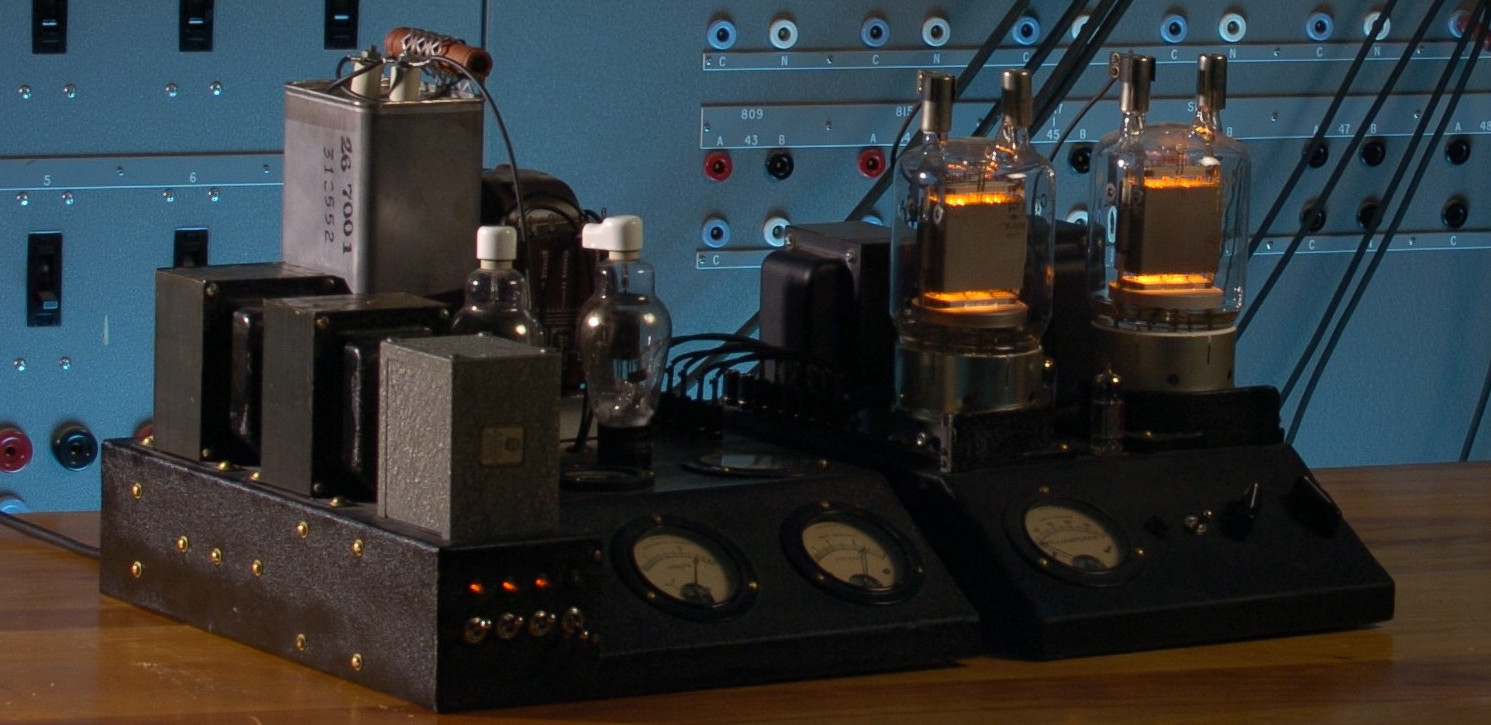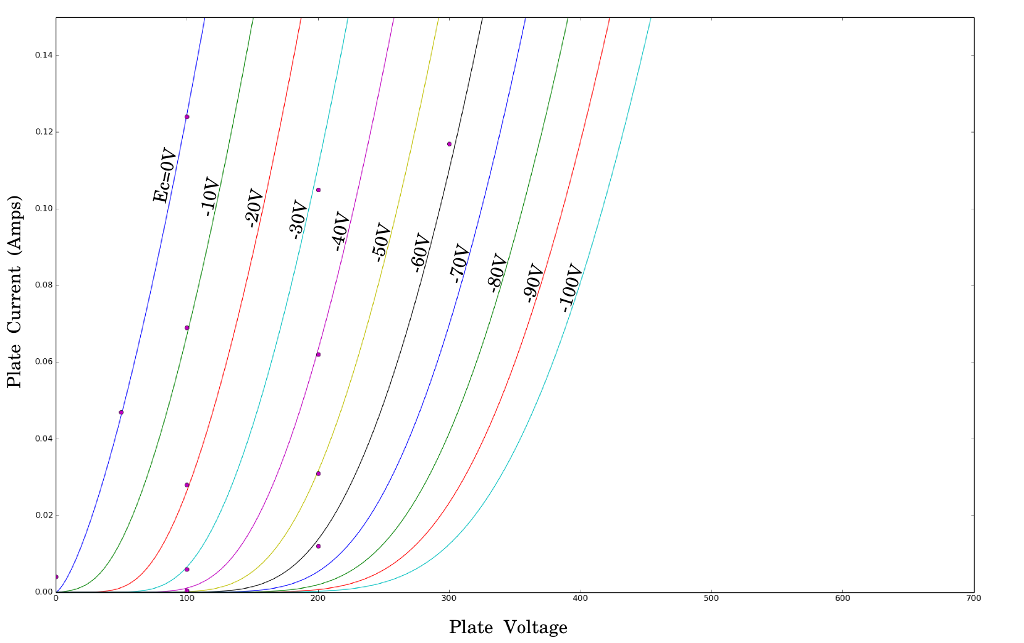GU-81m Amplifier

I was amazed when I first saw the GU-81m pentode. This relic of the cold war is about the size of a standard Nalgene bottle, and is rated for 450 watts continuous power dissipation. Yes please, I'll take two ;)
Above is a picture of the class A amplifier I built around those two tubes in 2005 (which of course doesn't use the GU-81m at anywhere near its maximum power). I'm currently in the process of making some changes to the design, so you can expect some updates in the future - including full schematics and distortion measurements. Until then you can find plate characteristics for the triode connected GU-81m I made, and some code for vacuum tube model optimization I wrote.
Triode Connected GU-81m
I decided to use the GU-81m as a power triode by connecting the screen grid to the anode. To be able to use the tube in this configuration required that I take new measurements of the plate characteristics. This was done using the standard configuration pictured below, without the grid current measurement.

Measured Plate Characteristics - GU-81m triode connected
Modeling and Optimization
In this redesign project, I wanted to be able to fit the measured data to a model which would allow me to simulate the GU-81m in SPICE and obtain reasonable estimations of the plate characteristics at unmeasured points. I chose to use the model described by Norman Koren. An explanation of the terms in model can be found on his website. This is an emperical model which bears resemblance to the Child-Langmuir law.

To fit the model to the data, I used the Nelder-Mead scheme included in the scipy.optimize python package. As a first test I wanted to check that the model could recover the characteristics of a 12AX7 from data digitized by Emiliano Rial Verde . The results are seen below, with the measurement points represented by dots and the model as lines.

The next step was to fit the data from the triode connected GU-81m. In retrospect I wish I had made more measurements in general, and had data for grid voltages less than -60 volts. This model was not optimized for the high current measurement points, as the output transformers will be the limiting factor in the output power.

The python code for model optimization can be found here.
Constructing the Load lines
Coming soon...